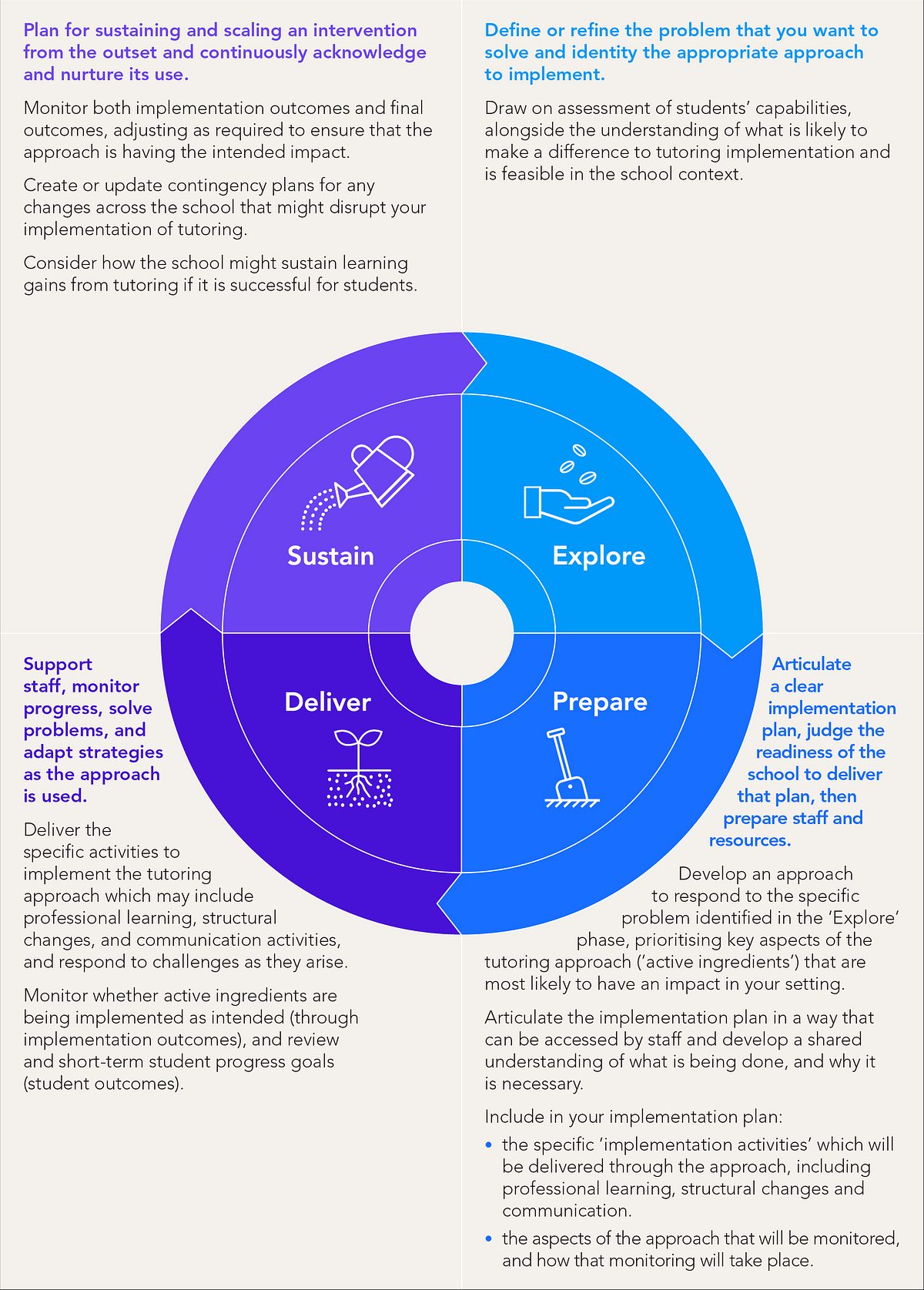Implementing tutoring for students who require additional support is one approach that has been effective in ‘catching up’ students and is being widely used to respond to interruptions to onsite schooling due to Covid-19 in Australia and internationally.
Several common principles apply to the effective implementation of tutoring. Within the guide, school leadership teams will find:
- Summaries of the evidence relevant to tutoring
- Implementation recommendations drawn from the evidence
- Considerations for monitoring and evaluating their approach, and
- Illustrations of how schools may implement tutoring.
The guide has been developed by Evidence for Learning drawing on current research of our UK partner, the Education Endowment Foundation (EEF), to provide school leadership teams with indications of what is most likely to work based on the current evidence available.
Both one to one and small group tuition can be effective in improving student outcomes and the way this tutoring is delivered can have an impact on effectiveness.
Effective one to one tuition is likely to include the following features:
- Short, regular sessions (about 30 minutes, three to five times a week) over a set period of time (six to twelve weeks) appear to result in optimum impact.
- Tuition should be additional to, but explicitly linked with, normal teaching.
Effective small group tuition is likely to include the following features:
- A trained educator working with between two and five students.
- The content of tutoring sessions is connected to the work occurring in the classroom and students are assisted to see these linkages.
- Regular sessions at least three times a week, or 50 hours over four months, delivered in about 30 to 60 minutes each time appear optimal.
One of the features that distinguishes effective and less-effective schools, in addition to what they implement, is how they put new approaches into practice.
One of the key tenants of effective implementation – as identified in Evidence for Learning’s Guidance Report on implementation – is to have a clear and concise implementation plan to communicate to school staff and other stakeholders what is being implemented and how it will be implemented.
The evidence-based process described in the guide provides schools with a means to dive deeply into improvement through tutoring, guided by the ‘foundations’ of good implementation and subsequent four stages of implementation – ‘Explore’, ‘Prepare’, ‘Deliver’ and ‘Sustain’.

These stages are explored in each section of the guide where prompting questions assist school leadership teams to discuss and reflect upon the implementation of tutoring in their school.
A set of common implementation challenges is outlined in the guide to help school leadership teams prioritise actions to take based on the specific implementation challenge or challenges they may be facing in their school as they implement tutoring.
A school leader should identify their relevant challenge by reflecting on the statements in the figure below and then refer to that section of the guide.
School leadership teams only need to read the section relevant to their specific challenge, as key information is repeated across the sections. As the implementation of tutoring progresses in their school they may return to this document to review the guidance on a new challenge.

Download the Guide below